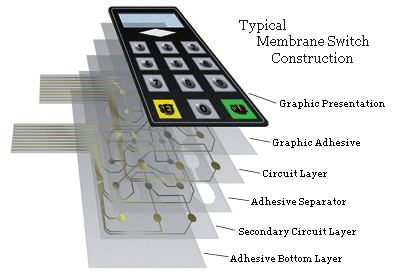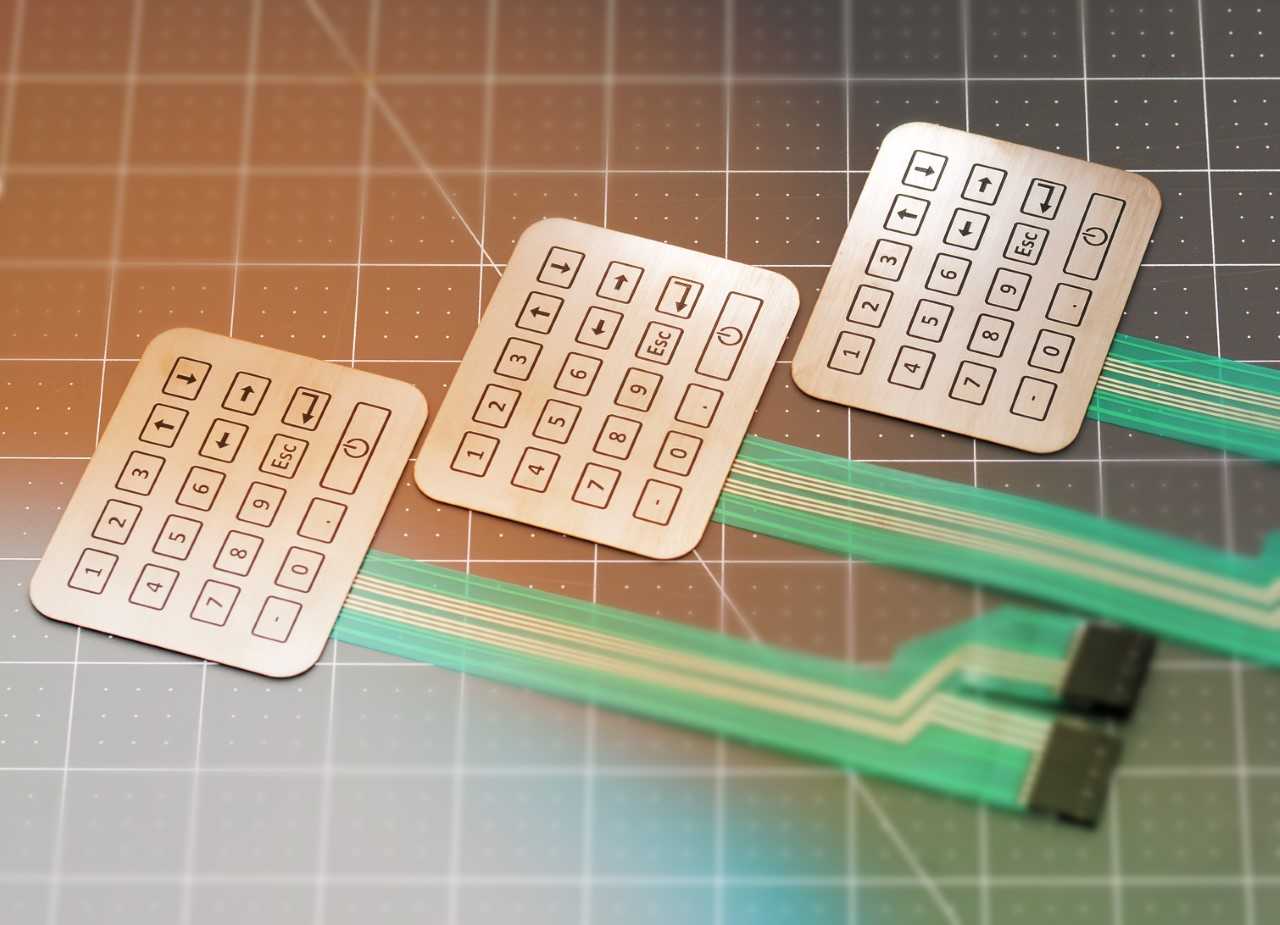The services offered by a specialized membrane switch manufacturer go beyond standard production.
The services offered by a specialized membrane switch manufacturer go beyond standard production.
Blog Article
All Concerning Membrane Layer Switch: Recognizing Its Layout and Functionality
When you think of the control user interfaces in modern-day tools, membrane switches typically enter your mind. These elements are greater than simply switches; they blend design and functionality seamlessly. Understanding just how they function and what makes them reliable can change your perspective on daily electronics. There are subtleties to their layout and performance that you might not be aware of. Let's explore what sets membrane switches besides various other control systems.
What Are Membrane Buttons?

Membrane layer switches can also be tailored relating to shape, size, and graphics, permitting manufacturers to create unique user interfaces customized to specific items. In general, membrane layer switches play a substantial function in boosting individual experience throughout a broad array of applications.
Exactly How Membrane Layer Switches Job
When you press a trick on a membrane layer button, it triggers an uncomplicated yet effective device. The leading layer, typically constructed from versatile product, pushes down onto a conductive layer underneath it. This activity bridges the gap between conductive traces, finishing an electrical circuit. As quickly as the circuit closes, it sends out a signal to the tool's controller, which translates your input.
You'll discover that the tactile responses varies based on the switch style, supplying either a soft click or a more noticable action. As soon as you release the key, the membrane go back to its initial placement, resuming the circuit and quiting the signal. This procedure occurs practically immediately, ensuring a responsive user experience.
Membrane switches are prominent due to their longevity and resistance to dust and moisture, making them perfect for different applications, from home home appliances to clinical tools. Comprehending this procedure aids you value their extensive use.
Secret Components of Membrane Switches
Understanding the crucial parts of membrane buttons is essential for understanding their capability and style. The safety layer shields against environmental factors and use, expanding the switch's life expectancy. By recognizing these parts, you'll gain understanding into just how membrane changes operate and their relevance in different applications.
Products Used in Membrane Layer Switch Style
The efficiency and longevity of membrane switches over heavily depend upon the products utilized in their layout. You usually encounter polyester and polycarbonate as main substratums due to their exceptional toughness and versatility. These materials resist scratches and chemicals, making them excellent for demanding environments.
The conductive layers commonly utilize silver or carbon, selected for their reliability and conductivity. membrane switch manufacturer. Silver offers exceptional efficiency, while carbon is an affordable option. For the overlay, you may take into consideration a matte or shiny finish, depending upon your aesthetic requirements and customer experience
Make certain to pick adhesives that withstand ecological aspects like temperature and moisture. Selecting the best materials will certainly guarantee your membrane layer button stands the examination of time.
Layout Factors To Consider for Membrane Buttons
While making membrane switches, it's essential to consider numerous factors that affect their capability and customer experience. Begin by concentrating on the layout and button dimension; make specific they're instinctive and simple to navigate. Think about the responsive feedback you wish to give-- will customers need a noticeable click or a softer touch? Furthermore, consider the products you'll utilize, as they'll influence resilience and looks. you can look here
Verify your layout suits environmental factors, like dampness or temperature level variations, which might impact performance. By thoroughly thinking about these aspects, you'll produce a membrane layer button that boosts usability and satisfaction.
Applications of Membrane Layer Switches
Membrane switches are versatile elements found in various applications, from commercial tools to customer electronics. You'll see their impact in machines that require durable interfaces and in tools that take advantage of streamlined layouts. Recognizing these applications assists you value the capability and functionality of membrane layer switches in everyday technology.
Industrial Equipment Usage
When you're looking to boost the performance of commercial equipment, membrane layer switches offer a dependable solution that integrates resilience with easy to use layout. These switches are best for severe environments, supplying resistance to dust, dampness, and chemicals. Welcome membrane switches to improve your procedures and improve total efficiency.
Customer Electronic Devices Integration
In the domain of consumer electronic devices, membrane layer buttons play an essential role in enhancing individual interaction and gadget functionality. You'll locate them in devices like microwaves, remotes, and pc gaming consoles, providing a seamless means to interact with use this link technology. Their sleek style permits very easy assimilation right into numerous items, making controls intuitive and easy to use. With their capability to integrate visit here graphics and backlighting, you can appreciate a modern-day visual that enhances the gadget's overall appearance. Membrane buttons likewise assure durability and resistance to dirt and moisture, prolonging the lifespan of your electronic devices. By picking membrane buttons, you improve not simply the capability yet likewise the style of your gadgets, making daily communications smooth and enjoyable.
Benefits and Negative Aspects of Membrane Switches
While membrane buttons supply a variety of benefits, they also come with some drawbacks that you should consider. One considerable advantage is their portable design, making them perfect for space-constrained applications.

Nonetheless, there are negative aspects. Membrane layer buttons can have a much shorter life-span contrasted to mechanical buttons, specifically under heavy use. They can likewise be much less tactile, which could impact user feedback during operation. Furthermore, if harmed, fixing them can be challenging and commonly requires total substitute. Ultimately, their level of sensitivity to extreme temperatures and ecological conditions may limit their efficiency in particular settings. Balancing these pros and cons will certainly help you establish if membrane buttons are the appropriate suitable for your task.
Often Asked Concerns
How Lengthy Do Membrane Layer Switches Over Usually Last?
Membrane switches generally last in between 5 to 10 years, relying on usage and environmental problems. You'll intend to examine factors like wear, direct exposure to dampness, and temperature level variations to evaluate their durability successfully.
Can Membrane Layer Switches Be Customized for Details Designs?
Yes, you can personalize membrane buttons to fit certain styles (membrane switch manufacturer). You'll have the flexibility to choose colors, forms, and designs that match your task's needs, ensuring they blend effortlessly with your overall aesthetic
What Is the Cost Array for Membrane Layer Change Manufacturing?
The price range for membrane layer button manufacturing usually drops between $1 and $10 each, depending on variables like design complexity, quantity, and products. You can get quotes from suppliers to locate the ideal option.

Are Membrane Layer Changes Waterproof or Resistant?
Membrane buttons can be made to be water resistant or immune, depending on products utilized and building and construction methods. If you need them for damp atmospheres, guarantee you define those needs during the layout procedure.
How Do Membrane Switches Over Contrast to Standard Buttons?
Membrane buttons are usually thinner and extra flexible than standard switches, providing a sleek style. They're commonly easier to clean up and incorporate, but might not offer the responsive responses you're made use of to with mechanical choices.
Conclusion

Report this page